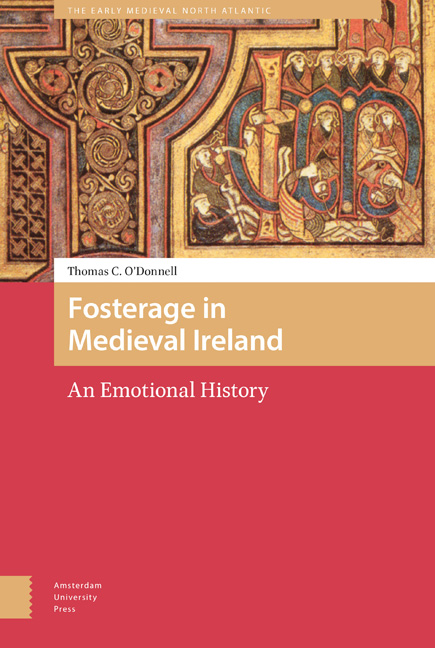Book contents
- Frontmatter
- Dedication
- Contents
- Abbreviations
- Acknowledgements
- Introduction
- 1 Cú Chulainn and Expressions of Foster Fatherhood
- 2 Who Makes a Foster Sibling?
- 3 Identity within Fosterage
- 4 Fosterage in the Medieval Irish Church
- 5 Animal Fosterage: A Bestial Parallel?
- Conclusion
- Bibliography
- About the Author
- Index
2 - Who Makes a Foster Sibling?
Published online by Cambridge University Press: 25 November 2020
- Frontmatter
- Dedication
- Contents
- Abbreviations
- Acknowledgements
- Introduction
- 1 Cú Chulainn and Expressions of Foster Fatherhood
- 2 Who Makes a Foster Sibling?
- 3 Identity within Fosterage
- 4 Fosterage in the Medieval Irish Church
- 5 Animal Fosterage: A Bestial Parallel?
- Conclusion
- Bibliography
- About the Author
- Index
Summary
Abstract
The figure of Cú Chulainn is used to define and examine the foster sibling relationship. The first relationship is created at a very early stage when Cú Chulainn is nursed by Finnchóem and starts his relationship with her son Conall Cernach. The two warriors express their loyalty to one another, which is demonstrated through Conall's actions at the death of Cú Chulainn. Conall does not appear as a foster brother in Táin Bó Cúailnge, where Cú Chulainn's foster brothers fight against him. These foster brothers are created later in life through the shared education they all had with Scáthach in Alba. Both early association and shared education can create foster bonds.
Keywords: Táin Bó Cúailnge, brotherhood, loyalty, mourning, Fer Diad, Conall Cernach
‘Preferring their foster child and their foster siblings, [they] would persecute their own brothers and kin.’ This is how Gerald of Wales characterises the foster relationships he saw in Ireland. The emotional bond formed between foster siblings was a famously strong one, stronger even than that of blood kin. As well as highlighting the close affection felt for the foster family, Gerald's quotation assumes that the new family created through fosterage must be opposed to the blood family. We cannot fully reconstruct the emotional community of fosterage without being aware of the emotional community of the blood family, but we need not assume that they exist in opposition to one another. Gerald was trying to create a picture of a barbarous Ireland and he uses this supposed reversal of the natural of the order. Despite his partisan view there are examples in the annals and in the narrative literature of fosterage ties prevailing over blood ties. There are also examples of blood and foster families coexisting in harmony. While we have already considered the relationship between foster children and foster parents, in this chapter I will address the relationship between the foster siblings themselves. The vertical relationship of foster parent to child is clear in the law texts and depends on obvious, deliberate actions: nourishing, teaching and protecting. For the foster siblings, the boundaries are much less clearly defined.
- Type
- Chapter
- Information
- Fosterage in Medieval IrelandAn Emotional History, pp. 69 - 98Publisher: Amsterdam University PressPrint publication year: 2020

